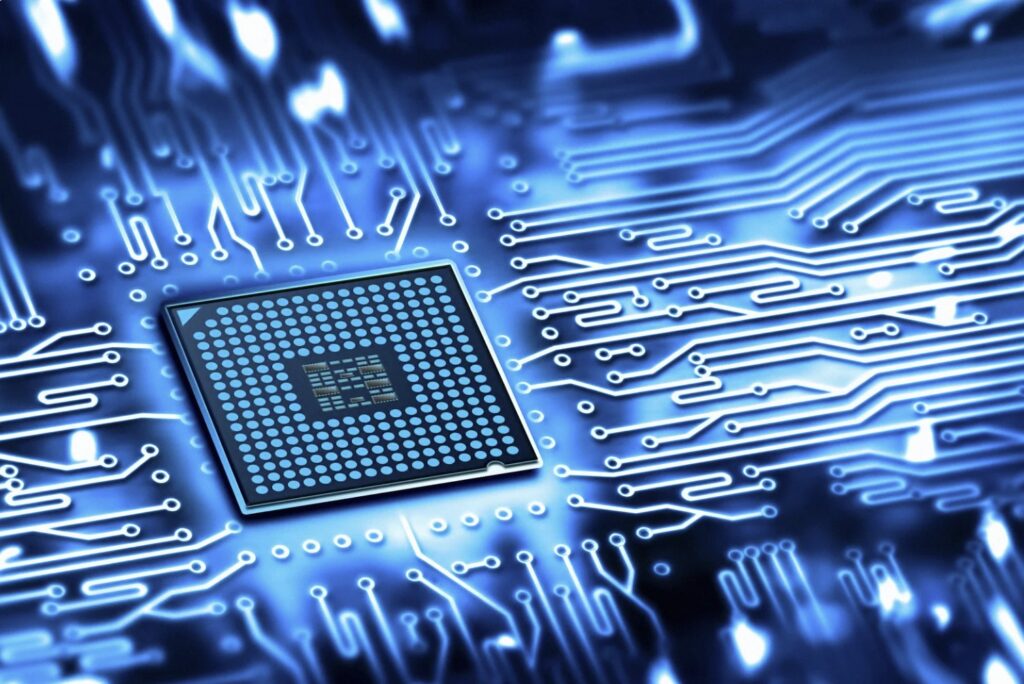In a rapidly evolving technological landscape, integrating various hardware components into a cohesive, fully functional system is often the linchpin of electronic product development. This process, known as electronic integration, ensures that all components—from sensors and microcontrollers to communication modules—work together without a hitch. By streamlining multiple subsystems into one well-orchestrated unit, electronic integration services help organizations reduce development cycles, control manufacturing costs, and create reliable, high-performing products.
This article delves into the critical role electronic integration services play in modern electronic design. We will explore the benefits they provide, the industries that rely on them, and the challenges that arise when merging different technologies into a single solution. We will also look at how custom electronic design firms, such as Arshon Technology, contribute valuable expertise that simplifies this intricate process.
1. Understanding Electronic Integration
At its core, electronic integration is the art and science of blending discrete hardware elements to function as a seamless whole. A typical electronic system might include:
- Microcontrollers or Processors: The “brains” of the device, responsible for executing firmware or software tasks.
- Sensors and Actuators: Devices that collect environmental data (like temperature, pressure, or motion) or initiate actions (e.g., turning on a motor).
- Communication Modules: Interfaces such as Wi-Fi, Bluetooth, Zigbee, or cellular modems that enable data exchange.
- Power Management Systems: Circuits that regulate voltage, current, and power distribution across all components.
- Mechanical Enclosures and Connectors: Physical structures that protect and interconnect the system’s electronic components.
Integrating these elements is no trivial task. Developers must consider power requirements, signal integrity, electromagnetic compatibility (EMC), thermal management, and mechanical constraints. Proper planning, testing, and optimization ensure that the final product operates reliably under real-world conditions.
2. The Significance of Electronic Integration Services in Electronic Design
2.1 Streamlined Product Development
When different subsystems are designed independently and then brought together late in the development cycle, compatibility issues can lead to unexpected delays and cost overruns. Electronic integration services can mitigate these risks by adopting a holistic, custom electronic design approach from the outset. By addressing hardware interactions early in the development process, teams can identify potential issues—such as interference or power draw conflicts—before they escalate.
2.2 Cost and Time Efficiency
Effective integration reduces the likelihood of extensive rework, saving both time and resources. For instance, if a design is tested and validated at interim milestones, the final stages require fewer revisions. This streamlined approach accelerates time-to-market—a key competitive advantage in industries where product life cycles are continually shrinking.
2.3 Improved Product Quality and Reliability
Customers and end-users demand reliable products that perform consistently over their lifespan. By meticulously integrating hardware, manufacturers can maintain tighter control over performance variables. Proper shielding and grounding techniques help mitigate noise or interference, while robust mechanical connections minimize the risks associated with vibration and wear. Overall, comprehensive integration ensures that each component is chosen and fine-tuned for the system’s operational envelope.
2.4 Enhanced Scalability and Future Upgrades
Thoughtful electronic product development includes planning for scalability and future upgrades. By designing modules with standardized interfaces and clear communication protocols, systems become easier to update. This can be essential in rapidly evolving sectors like IoT (Internet of Things), where products may need frequent firmware updates or the addition of new sensors and connectivity options.
3. Key Benefits of Electronic Integration Services
- Reduced Complexity: By relying on experts in electronic design and integration, organizations can simplify the process of orchestrating multiple subsystems.
- Centralized Expertise: Integration specialists bring cross-disciplinary knowledge—covering electrical engineering, mechanical design, firmware development, and testing protocols.
- Lower Failure Rates: Comprehensive testing protocols ensure that subsystems function together in various conditions (temperature extremes, humidity, mechanical shock), lowering the risk of field failures.
- Optimized Performance: Fine-tuning power delivery, signal routing, and thermal management leads to higher overall performance and energy efficiency.
- Regulatory Compliance: Seamless integration takes into account regulatory requirements (FCC, CE, UL) and industry-specific standards, easing the path to product certification.
4. Industries Benefiting from Electronic Integration
4.1 Consumer Electronics
From smartphones and wearables to gaming consoles and smart home devices, consumer electronics manufacturers rely heavily on electronic integration. Devices in this sector often feature multiple sensors, high-resolution displays, and wireless connectivity, all housed in sleek, space-constrained enclosures. Ensuring these elements work harmoniously requires deep integration expertise to manage power, heat, and signal integrity.
4.2 Automotive and Transportation
Modern vehicles are increasingly dependent on electronic systems such as infotainment units, advanced driver-assistance systems (ADAS), and telematics. Integrating multiple sensors (camera, radar, LiDAR), computing platforms, and communication protocols is a major challenge. Automotive-grade reliability standards also demand rigorous testing for vibration, temperature extremes, and electromagnetic interference.
4.3 Industrial Automation and Robotics
Factories and industrial facilities deploy robots and control systems that incorporate sensors, actuators, and communication networks. Electronic integration services ensure these elements function reliably in harsh environments—where dust, heat, or continuous operation can degrade performance. Careful design mitigates such factors, enabling robust operation and preventing costly downtime.
4.4 Healthcare and Medical Devices
Healthcare devices—ranging from portable diagnostic tools to sophisticated imaging machines—rely on sensors, microprocessors, and connectivity solutions. Adhering to stringent safety and accuracy requirements is crucial for patient well-being. Comprehensive integration ensures that power fluctuations, electromagnetic interference, or component failures do not jeopardize patient safety or the integrity of medical data.
4.5 Aerospace and Defense
In aerospace and defense applications, electronics face extreme conditions, including high altitudes, rapid temperature changes, and intense vibration during launches or combat operations. Electronic integration in these sectors not only demands reliability but also calls for rigorous adherence to standards like MIL-STD or DO-254. Every component must be secured, tested, and verified to prevent catastrophic failures.

5. Challenges and Considerations in Electronic Integration
5.1 Signal Integrity and Noise Management
Ensuring clean signal transmission across high-speed data lines is paramount. Issues like crosstalk, ground loops, and electromagnetic interference can deteriorate performance or even result in system malfunctions. Integration specialists use simulation tools, shielding, and careful PCB layout strategies to mitigate these risks.
5.2 Power Requirements and Thermal Design
Merging multiple subsystems means consolidating varying voltage requirements. Overlapping operational states can strain power supplies or create overheating scenarios if not managed properly. Achieving balanced power distribution and adequate heat dissipation is a core aspect of custom electronic design.
5.3 Mechanical Constraints
Often, integrated electronics must fit into compact or uniquely shaped enclosures, demanding precision in PCB shape, component placement, and connector design. These constraints can complicate manufacturing and assembly, making early collaboration between electronic and mechanical design teams crucial.
5.4 Firmware and Software Integration
Hardware is only half the equation; firmware and software integration remain essential for overall system functionality. Identifying bottlenecks or conflicts between hardware resources (like interrupts and bus interfaces) requires close coordination among hardware and software teams.
5.5 Regulatory and Certification Barriers
Before hitting the market, many products must pass certification for electromagnetic compatibility (EMC), radio frequency (RF) compliance, safety, and more. Integration strategies that incorporate best practices—such as proper grounding and shielding—dramatically increase the likelihood of first-pass success in certification tests.
6. The Role of Arshon Technology in Electronic Integration
Among the firms offering comprehensive electronic integration services, Arshon Technology stands out for its end-to-end approach. By combining in-house expertise in circuit design, PCB layout, firmware development, and testing, Arshon delivers custom electronic design solutions optimized for manufacturability and reliability. Their process typically involves:

- Concept Development: Evaluating project requirements, selecting suitable components, and proposing a high-level architecture.
- Detailed Design and Simulation: Crafting schematics, running simulations to validate power integrity and signal flow, and finalizing the PCB layout.
- Prototyping and Testing: Building functional prototypes and subjecting them to rigorous performance, environmental, and compliance tests.
- Refinement and Optimization: Addressing any issues uncovered during testing, refining mechanical aspects, and preparing documentation for production.
- Manufacturing and Post-Production Support: Managing supplier relationships, overseeing assembly, and offering long-term maintenance to ensure product longevity.
By adopting a holistic methodology, Arshon Technology helps clients avoid common pitfalls in integration, accelerating time-to-market while ensuring products remain robust and adaptable to future needs.
7. Conclusion
Electronic integration is the cornerstone of successful electronic product development. By uniting diverse hardware elements—from microprocessors and sensors to power supplies and mechanical enclosures—organizations can offer high-performance, reliable solutions that meet the demands of modern consumers and industrial end-users. The benefits of a well-executed integration strategy are manifold: faster time-to-market, lower total costs, and improved product reliability.
However, realizing these advantages requires navigating complex challenges, including signal integrity, thermal management, mechanical constraints, and regulatory compliance. This is where specialized providers of custom electronic design excel. They bring together cross-functional expertise, best-in-class tools, and proven workflows to address each hurdle methodically.
Arshon Technology exemplifies how electronic integration services can empower businesses, large and small, to go from conceptual ideas to market-ready products. By paying close attention to every phase of design and manufacturing, they ensure that hardware systems function seamlessly in even the most demanding environments.
In an era defined by rapid innovation and intensified competition, investing in high-quality electronic integration services is less a luxury and more a strategic necessity. The results—innovative products that are reliable, cost-effective, and compliant with industry standards—speak for themselves. Through careful planning, expert engineering, and a focus on holistic system design, electronic integration services pave the way for technological breakthroughs that shape the future of industries worldwide.
